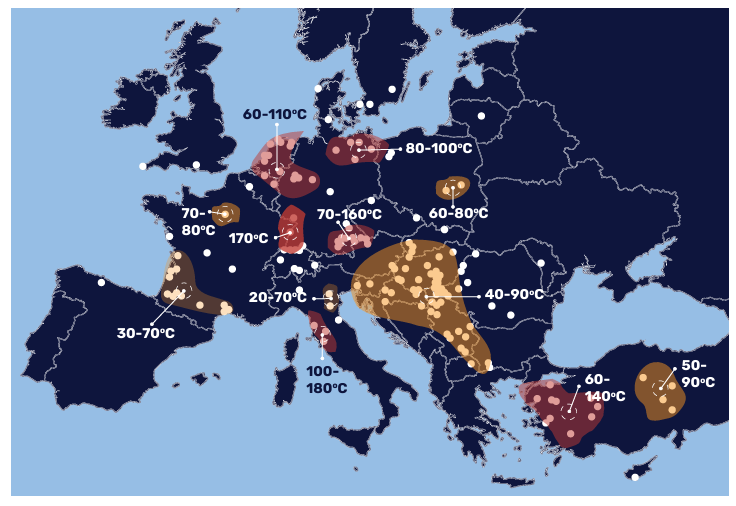The European Geothermal Energy Council (EGEC) has published this year’s edition of the annual Geothermal Market Report, which provides an in-depth assessment of the European geothermal industry’s status and growth during the year 2023.
The Key Findings of the 2023 Geothermal Market Report are publicly available, while the Full Market Report and Annexes are available only to EGEC members.
Geothermal power
As of the end of 2023, there was over 3.5 GWe of geothermal electricity generation capacity in Europe distributed among 143 operational plants. These facilities collectively generate approximately 20 TWh/year, with the EU specifically contributing about 7 TWh/ year.
The development pipeline for geothermal power remains very active with approximately 50 geothermal power plants under various stages of development across Europe, with Germany and Turkey leading the way. There are also significant numbers of planned geothermal power projects in Italy, France, and Croatia, while emerging markets like Spain and Greece are expected to begin to generate power from geothermal in the near future.
Regulatory uncertainties continue to be a challenge for geothermal developers in the EU. While geothermal has been identified by EU legislation as eligible for public funding, the implementation of such measures have been delayed. This is particularly evident in regions such as Turkey and Italy, where reforms to the aid scheme (FER 2) have slowed progress.
District heating and cooling
As of the end of 2023, there were 401 geothermal district heating and cooling (DHC) systems in Europe and 298 in EU Member States. This corresponds to 6 GWth of total installed geothermal heating and cooling capacity across 29 countries. Eight new systems were commissioned during this period in the EU, adding 33.9 MWth of capacity. New geothermal systems were installed in Finland, Romania, Germany, the Netherlands, and Slovakia.
France remains the leader in geothermal district heating capacity in the EU, second only to Iceland in Europe.

There are 316 projects under active investigation across Europe, which could add over 744 MWth to the existing 5,608 MWth capacity. Leading countries like Germany, France, and the Netherlands continue to explore for new geothermal resources in greenfield areas. With the help of policy and technological advancements, developing lower temperature geothermal systems in Europe for heating and cooling will be critical in achieving the region’s ambitious climate targets.
Geothermal heat pumps
Sales of geothermal heat pumps (GHPs) reached over 154,300 units in the EU in 2023, a notable 11.7% increase from 2022. The total stock of GHPs in Europe nearly reached 2.32 million units by the end of 2023, driven by concerns over energy security and affordability following Russia’s invasion of Ukraine.
Sweden led with 35,470 new installations, reflecting a 26% growth. Germany saw a slight decline with 30,700 units sold, a 1% decrease, yet remains the second-largest market in the EU. The Netherlands emerged as the third-largest market, with 22,220 units sold, experiencing an 11.1% increase. Finland demonstrated robust growth with 11,772 units added, a 24% increase. These top markets accounted for 55% of total sales.
The RePowerEU Plan, proposed by the European Commission in 2022, set a goal of doubling the current deployment rate of heat pumps, with a target of 10 million units by 2027 and 30 million by 2030. Considering current growth rates, these goals may be challenging.
Source: European Geothermal Energy Council
The post EGEC 2023 Geothermal Market Report highlights active project pipeline in Europe first appeared on ThinkGeoEnergy – Geothermal Energy News.
